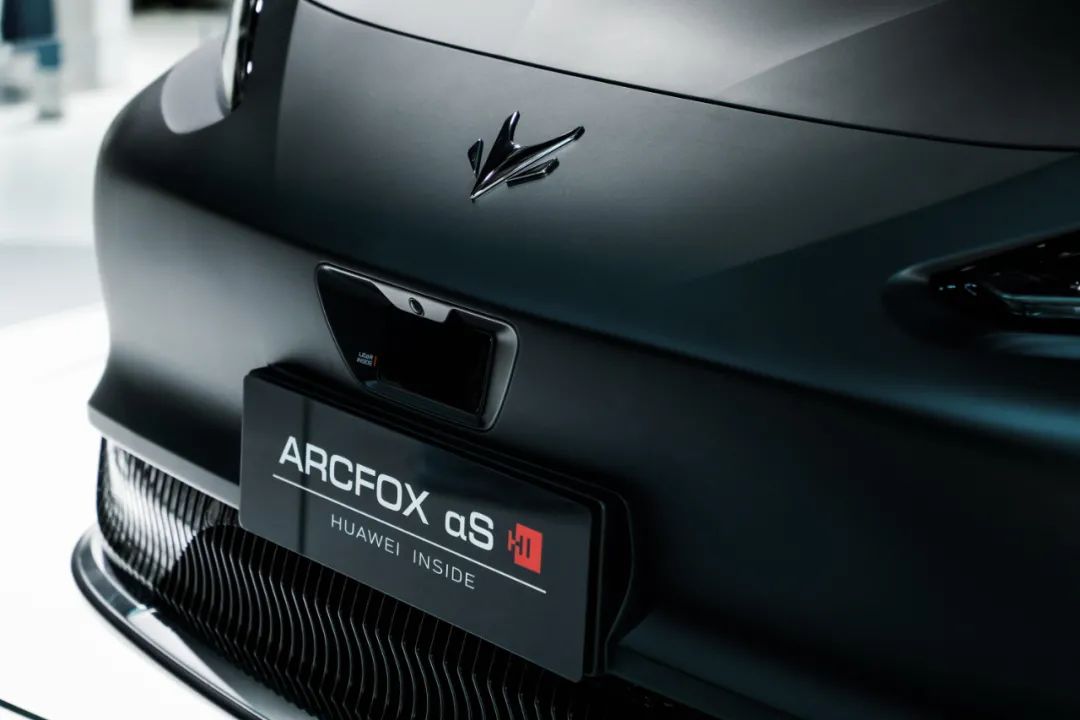On April 15th, we had the privilege of experiencing open road autonomous driving in the alpha S Huawei HI version model of the Jidu automobile at the Huawei Research Institute in Shanghai. After the on-site videos were uploaded (check out https://www.42how.com/post/2483), they quickly spread across the internet, and almost everyone who watched them was amazed by the actual autonomous driving performance of this car. Even overseas friends on the internet started discussing it fervently.

Actually, this level of autonomous driving video demonstration is not the first one to appear. But the key reason why everyone was surprised and excited is that what we saw in the video is a vehicle that will be mass-produced and delivered this year.
The mass-produced vehicle is here
On April 17th, the Jidu Alpha S series vehicle was officially released. Let’s cut to the chase and introduce the main product information from this release conference.
Jidu Alpha S, a mid-to-large-sized electric sedan with a 3D size of 4930 × 1940 × 1599(mm), a wheelbase of 2915mm, and a drag coefficient of 0.25. The power battery is provided by SK in South Korea. Jidu announced a total of 6 configured models at the release conference, including the Alpha S and Alpha S Huawei HI version.
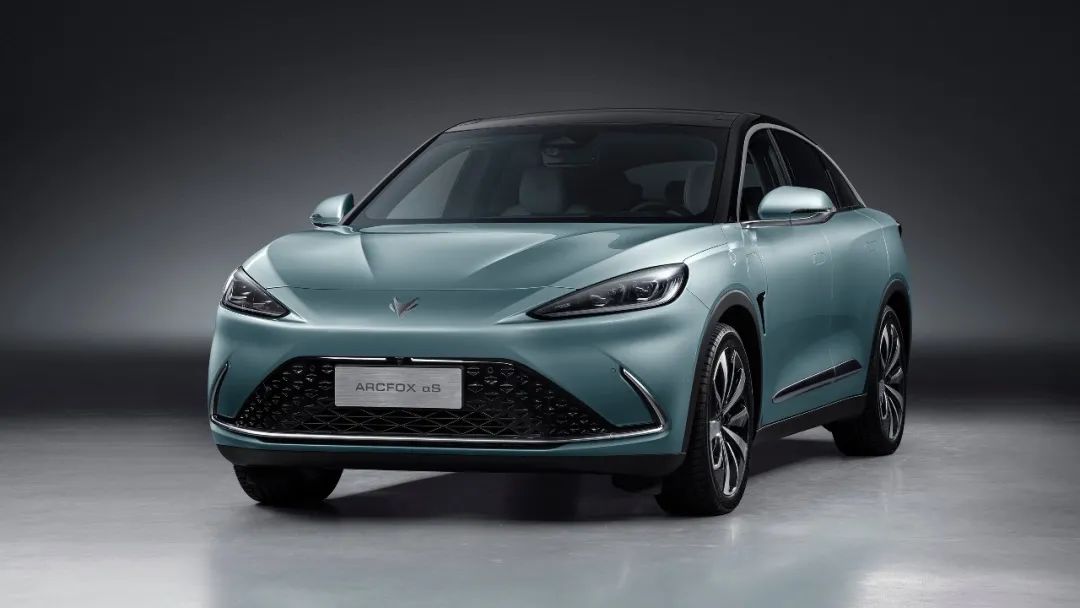
Alpha S without “HI”
The main parameters are as follows: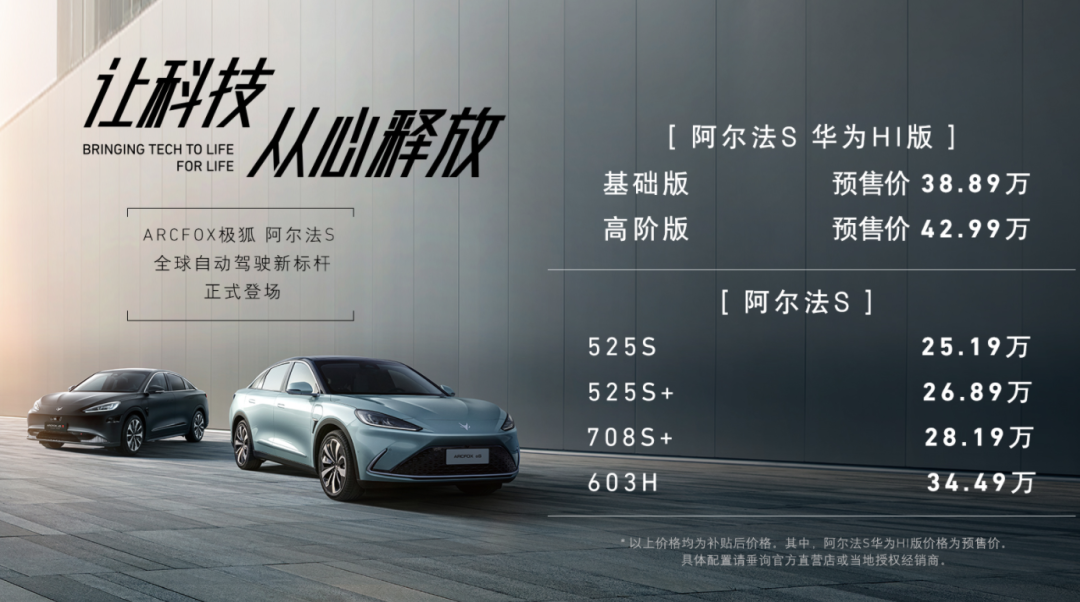
-
525S version has a battery capacity of 67.3 kWh, a peak power of 160 kW, an acceleration from 0 to 100 km/h in 7.7 seconds, NEDC range of 525 km, and the price is 251,900 yuan.
-
The 525S+ version has the same three electric parameters as the 525S version, but with higher configurations for assisted driving, and the price is 268,900 yuan.
-
The 708S+ version has a battery capacity of 93.6 kWh, a peak power of 160 kW, an acceleration from 0 to 100 km/h in 8.3 seconds, NEDC range of 708 km, and the price is 281,900 yuan.
-
The 603H version has a battery capacity of 93.6 kWh, a peak power of 320 kW, an acceleration from 0 to 100 km/h in 4.2 seconds, NEDC range of 603 km, and the price is 344,900 yuan.
Except for the entry-level 525S version, which has basic assisted driving, the remaining three models all come with an advanced assisted driving package that includes LCA lane change assist, automatic parking, and HWA highway automatic lane change assist.
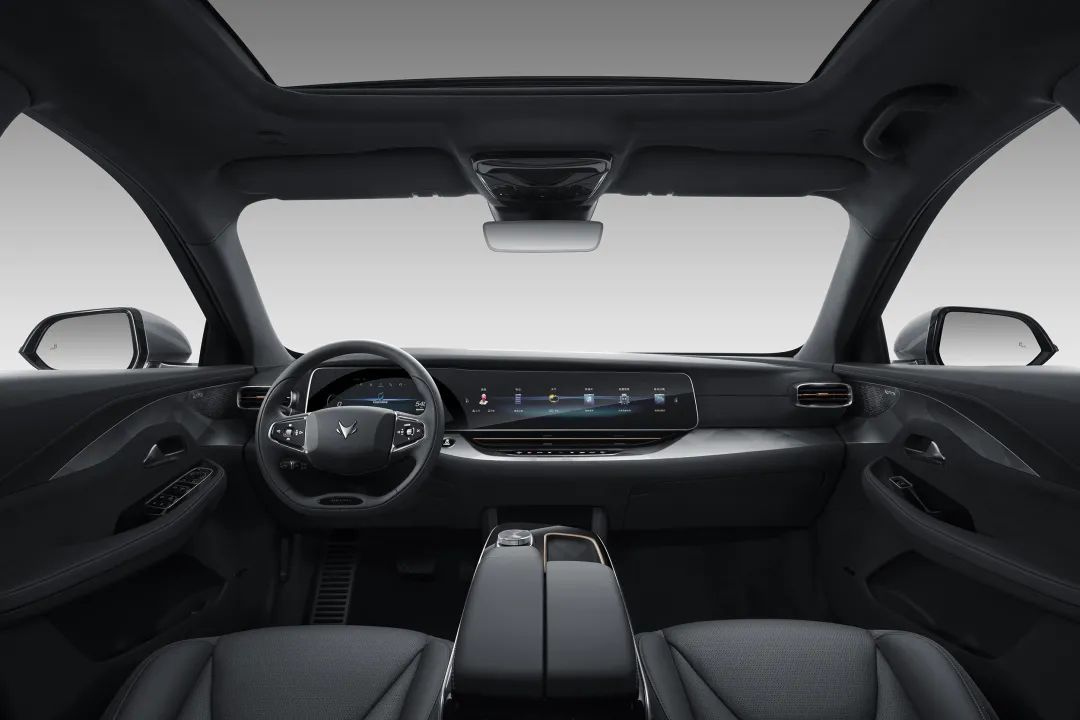
The remaining three models all come standard with a HUD, a 3840 x 720 resolution high-definition central control widescreen, and a 12-speaker Harman Infinity audio system with a subwoofer.
As for user benefits, customers who place orders before April 28 during the Shanghai Auto Show enjoy a discount of 10,000 yuan for a deposit of 2,000 yuan. Customers who purchase before May 30 enjoy a lifetime warranty for the vehicle and three electric components.After deducting the deposit for the auto show, the price of the Alpha S of the brand ARCFOX decreased by 8,000 yuan. Objectively speaking, the vehicle configuration is quite good, and the last two configurations, powered by a large 93.6 kWh battery, have reached the first echelon of the same level of endurance.
However, after experiencing the surprises brought by the Ford Mach-E, Zeekr 001, and other models, our expectations for the upcoming new car have been raised very high. The standard version of the later Alpha S of ARCFOX may not be able to meet such expectations. However, we all understand that the real star is the ARCFOX Alpha S HUAWEI HI version, which stunned the world and drove up the collective concept stocks of HUAWEI, and was crowned as the “world’s first mass-produced autonomous driving car“.
Under the “HI” label, ARCFOX Alpha S HUAWEI HI version is co-created by ARCFOX and HUAWEI. Compared with the standard version of Alpha S, this car has many more surprises. The video viewed by our reader must clearly show how amazing the autonomous driving ability of this ARCFOX Alpha S HI version is with functions such as unprotected left turns, automatic red and green light start and stop, automatic avoidance of vehicles, automatic avoidance and civility toward pedestrians, and automatic avoidance of non-motor vehicles.
Autonomous driving is its biggest highlight and strength, but it’s not just that. The power configuration of the Zeekr 001, which has dual permanent magnet motors of 400 kW, gives it an acceleration of 0 to 100 km/h in 3.8 seconds. With this data, it has gone further among many 3.9-second vehicles and won the crown of the independent brand’s zero-to-100 km/h acceleration champion.
However, this position was only maintained by Zeekr 001 for two days. The ARCFOX Alpha S HUAWEI HI version, equipped with a front asynchronous + rear permanent magnet dual motor configuration, has a peak power of 473 kW, and the corresponding acceleration 0-100 km/h is 3.5 seconds.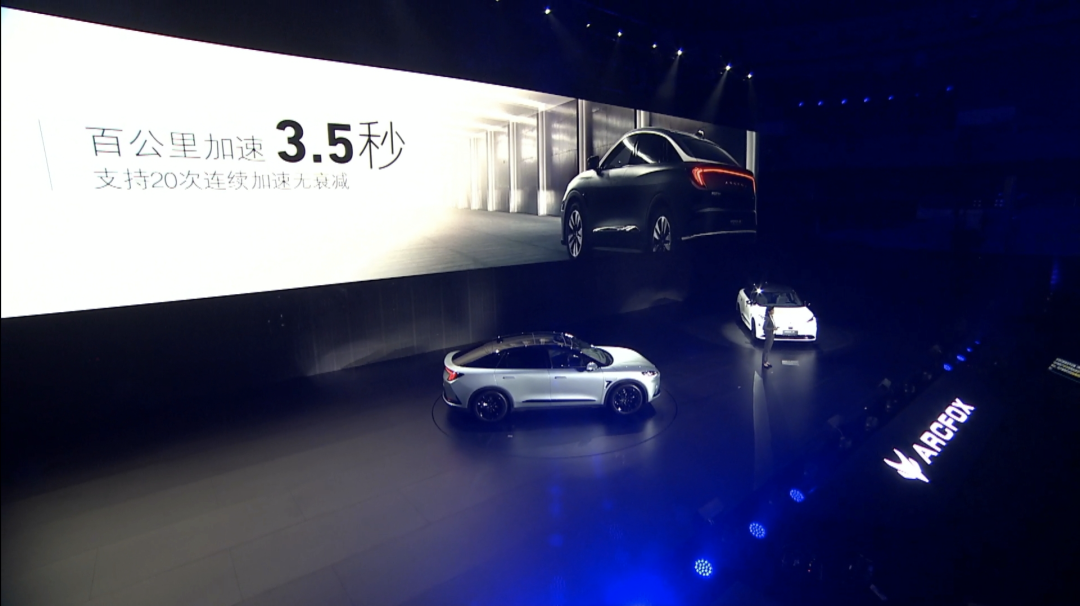
What’s more surprising is that at the press conference, Jinkou announced that this 3.5 second acceleration capability can achieve “20 consecutive accelerations without attenuation”. The other car that I remember being so confident in the sustainability of its acceleration performance is the Porsche Taycan.
With such a commitment, this special edition model must have made sufficient guarantees for the heat dissipation of the three-electric system.
Thanks to the 800V electrical platform, this special edition model jointly created by Jinkou and Huawei supports 200 kW DC fast charging in terms of charging, and in the demonstration at the press conference, it can replenish 197 km of displayed cruising range in 10 minutes.
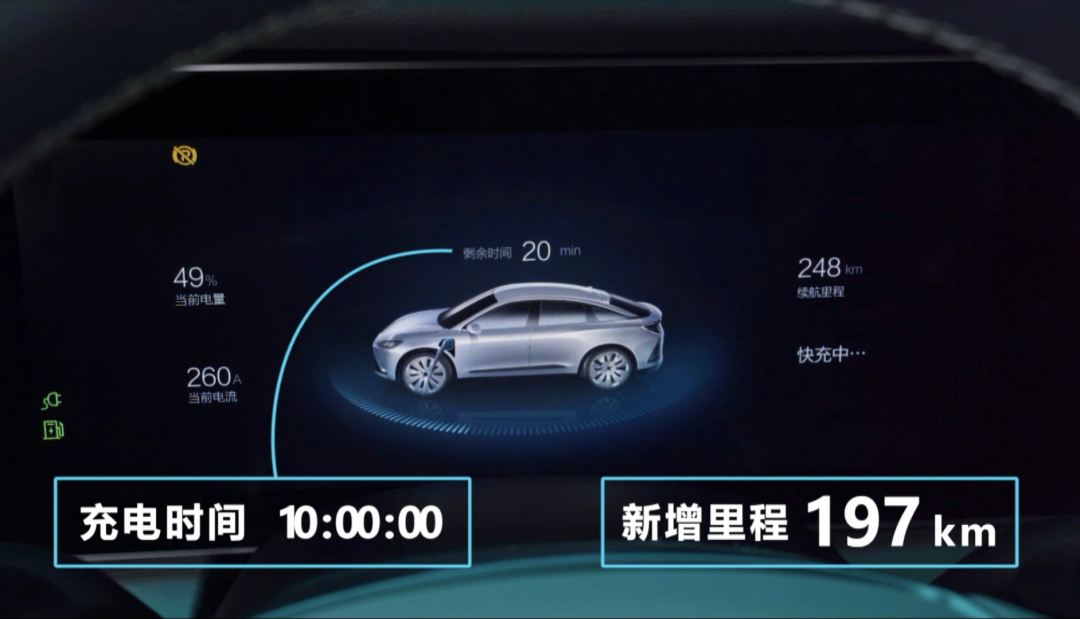
In addition, this car also supports wireless charging. Be careful not to confuse it with 15W wireless charging for mobile phones, but 7.5 kW wireless charging for the car.
These are the “hard highlights” of Jinkou Alpha S Huawei HI, and the “soft highlights” of this special edition model is that it is equipped with the Huawei car machine version of Hongmeng OS. Its biggest feature is to connect the interconnection between mobile phones and car machines. After the car machine and the mobile phone are connected, the navigation, WeChat, music and other content on the mobile phone can be seamlessly synchronized to the car machine.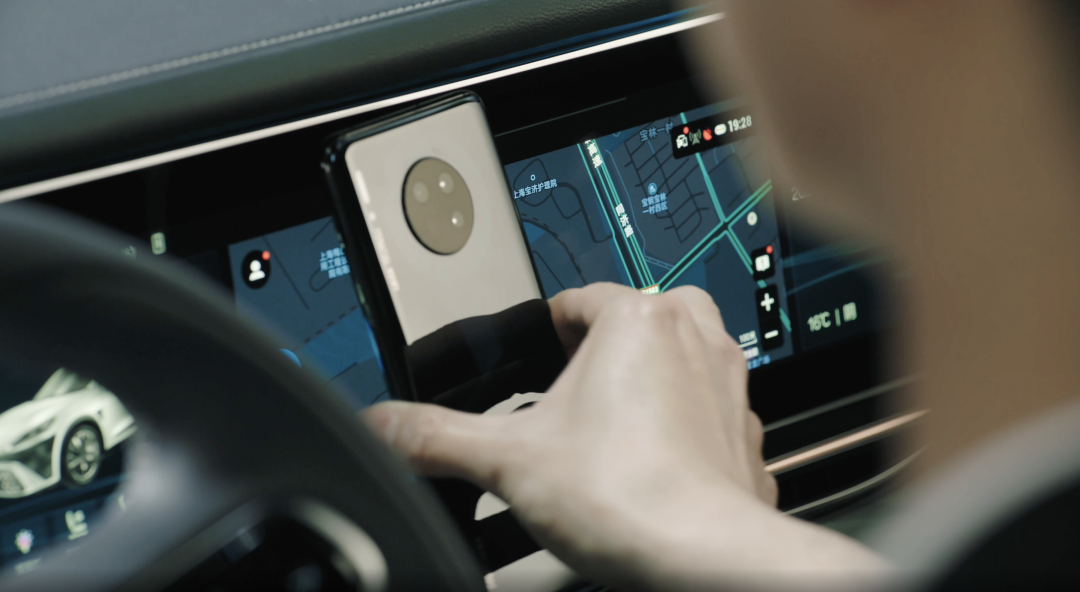
By bringing your phone close to the screen, the APP information can be synchronized to the car’s system effortlessly.
One thing that caught my attention in the demonstration video is the convenience of connecting the phone with the car’s system – simply by bringing the phone close to the car screen.
While every intelligent electric vehicle on the market emphasizes on voice interaction, this car supports partitioned voice recognition that, with the 5G T-BOX communication and Huawei Cloud solution, can achieve a system response time of less than 1 second. The manufacturer also proudly stated that this will be the “fastest intelligent cockpit voice experience”.
The Ultimate Cost
Taking all of the above into account, the NIO EC6 HUAWEI Hi Edition can be considered a car that excels in autonomous driving, power performance, and intelligent cockpit experience. However, this high-end vehicle that NIO and Huawei have worked hard to create also comes with a very realistic problem – price.
The advanced version of the EC6 HUAWEI Hi Edition is priced at CNY 429,900, while the basic version without City Autonomous Driving and Automatic Valet Parking has a pre-sale price of CNY 388,900.
As a consumer, the price of this car is beyond what I can afford, and objectively speaking, it is also foreseeable that there are not many consumers who can afford the EC6 HUAWEI Hi Edition at this price point. But from the perspective of the manufacturer, I can also understand why they priced it this way.
This is a car that carries a lot of effort and cooperation from both parties. Whether it is NIO or Huawei, they want to achieve the utmost on this car and strive to do their best in every aspect that can demonstrate their technical level and outperform their competitors.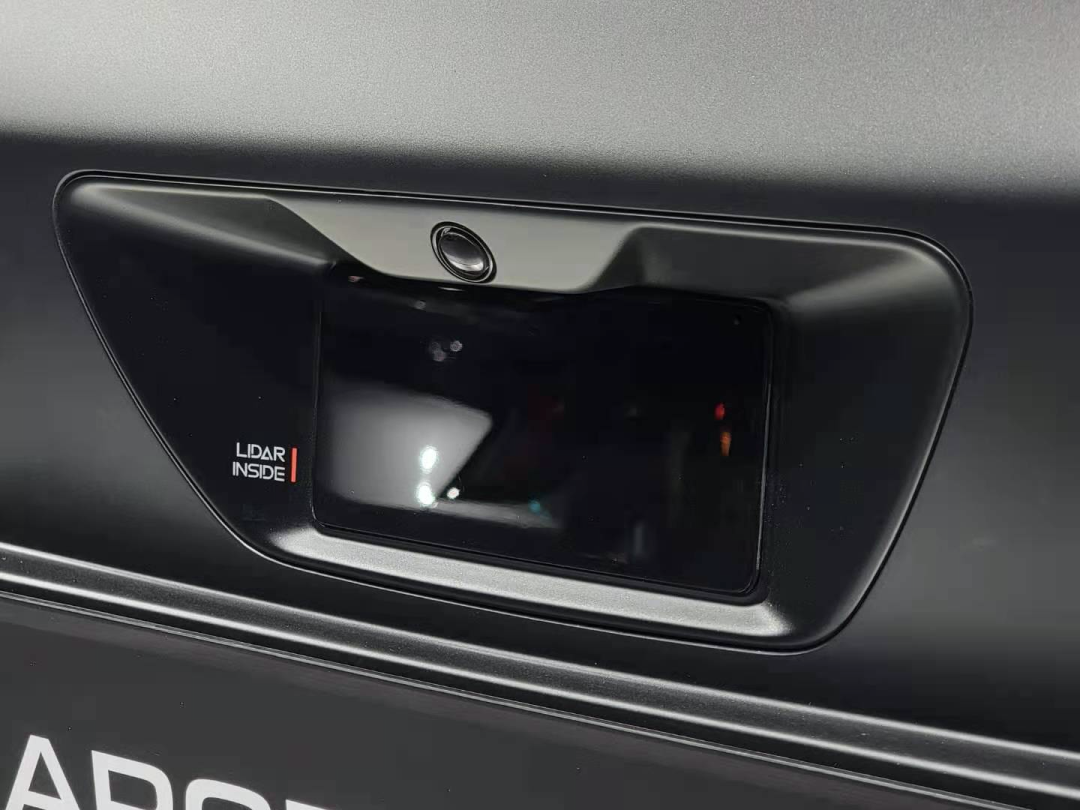
Lidar Real Shot
So we can see a series of configurations that could have been eliminated, such as 3 Lidars, 6 Millimeter-wave Radars, large area suede interior, 473 kW power system, 21-inch wheels, large diameter perforated brake discs, etc.
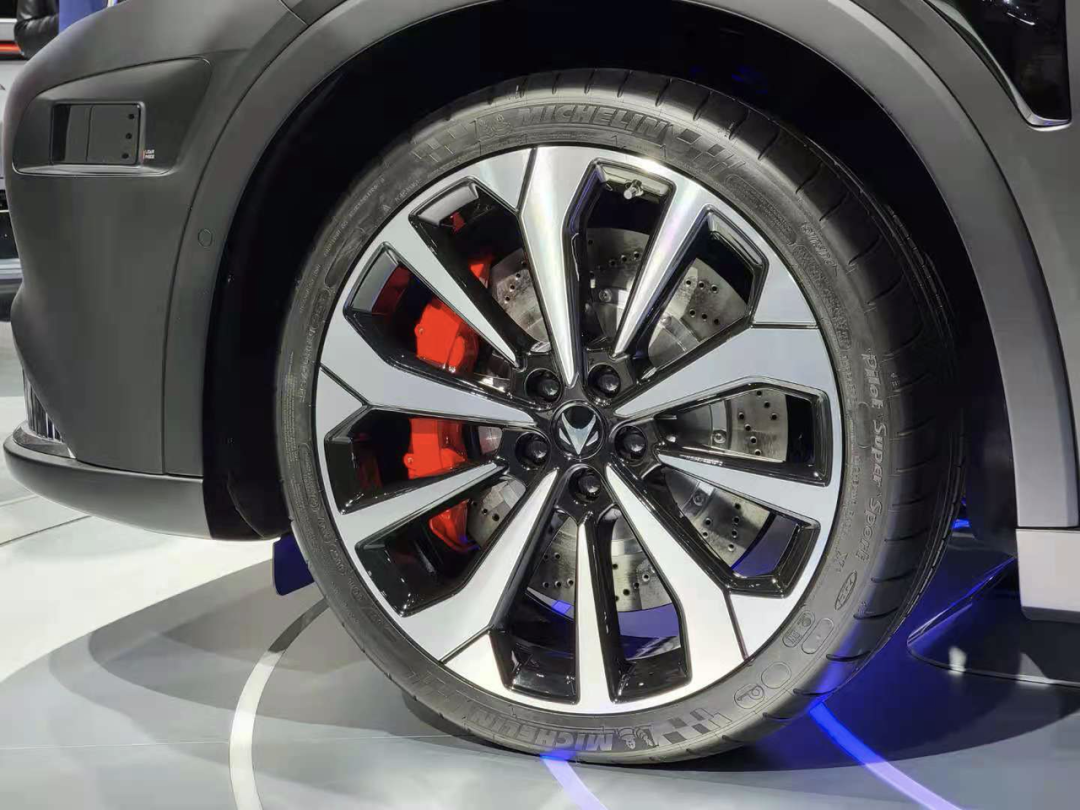
And one thing is that when you really do your best and ensure redundancy to the extreme, there will inevitably be concessions in overall cost.
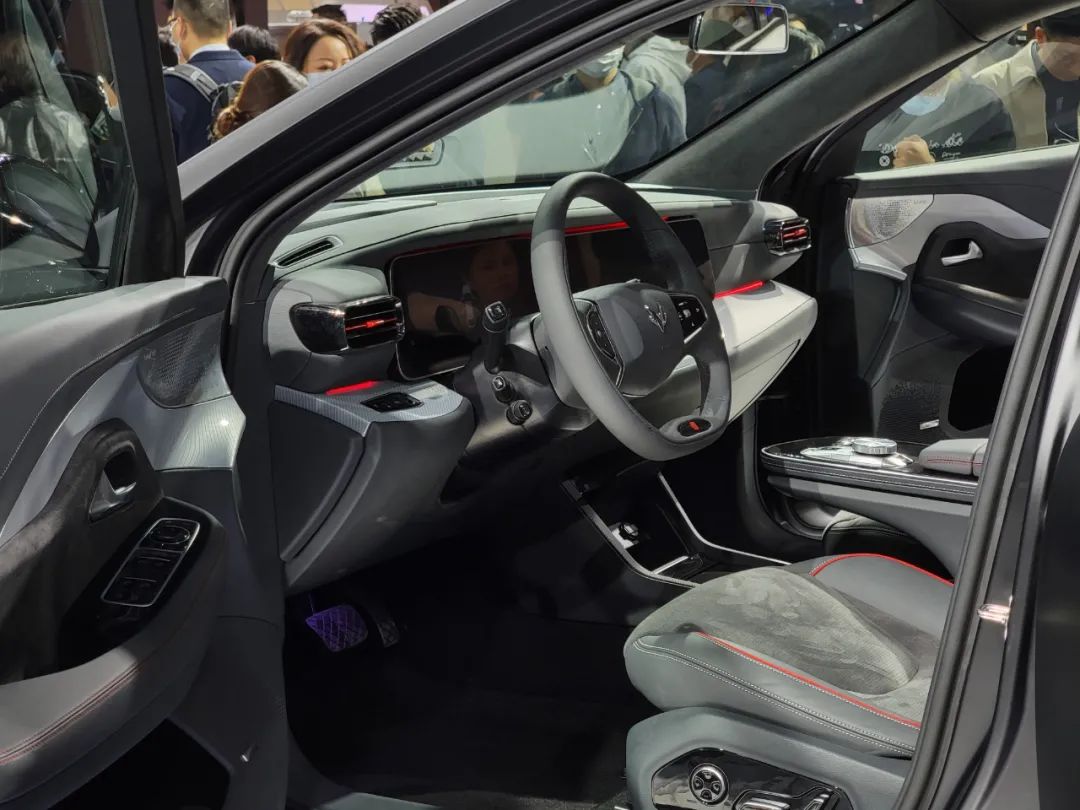
Interiors of Alpha S Huawei Hi Version from Foxtechs
Moreover, Tesla, with strong cost control capabilities, offers the Model 3 Performance with the optional yet far-from-realized FSD for a price of RMB 404,000 when compared horizontally.## Introduction
The Jixiong Alpha S Huawei HI version is 26,000 yuan more expensive than its luxurious configuration, space, quality, self-driving hardware, and actual self-driving capabilities, despite being better. (It is only 18,000 yuan more expensive after discounting for pre-orders.) I won’t say that it has cost-effectiveness, but I believe that there is little more premium in this price.
I think we have covered enough about the Alpha S. However, I believe that its story behind the viral video is still worthy of a part of this article.
Because of Belief, You See
At the end of the Jixiong Alpha S launch event, the official prepared a little surprise, which was the real video of our experience on April 15th. As mentioned earlier, the video had a huge impact, and we were very happy and excited as the creative force behind it.
The Background of the Surprise at the Launch Event
You may not know that this event was not an exclusive experience for the 42nd Garage. There must have been many chances and coincidences for our video to be the first among this batch, but the most crucial point is that we valued this event.
The partnership between Huawei and Jixiong has been very low-key and unknown until this video. In recent years, some manufacturers have been very fond of boasting about the abilities of their self-driving vehicles, even though the reality is disappointing. However, after receiving the invitation, we saw the prominent four words, “self-driving”, and we did not turn a blind eye. Facing the lack of fame and attention in the self-driving field of these two companies, we did a lot of preparation rather than ignoring it.
During this process, we also discovered some valuable information. We had a hunch that this self-driving experience would not be just a paper tiger. On the day of the event, despite being in the midst of a crowded schedule, we sent three colleagues in attendance. After the event, we immediately produced the video and edited the final cut overnight.
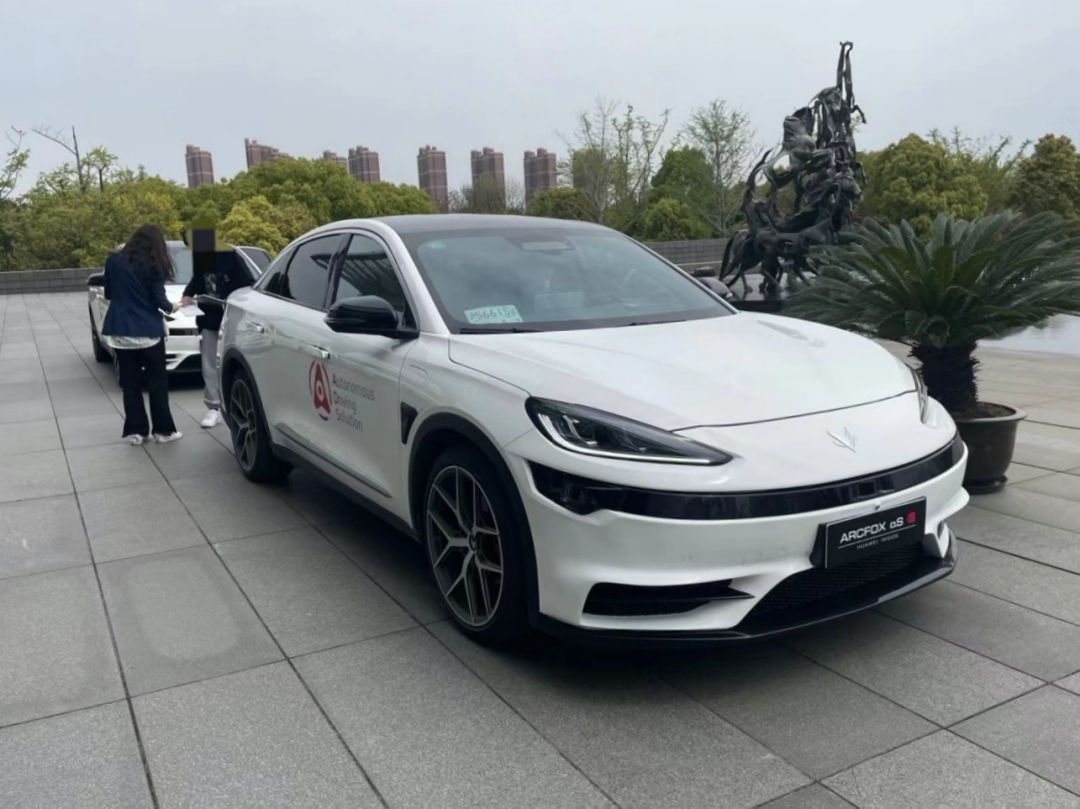 The most important thing is that the car co-created by JAC Motors and Huawei has not disappointed our attention and expectation. With its absolute strength, it has witnessed an important moment in the development history of automotive technology.
The most important thing is that the car co-created by JAC Motors and Huawei has not disappointed our attention and expectation. With its absolute strength, it has witnessed an important moment in the development history of automotive technology.
Only after doing this, are some experiences particularly memorable
JAC Motors’ high-end new energy brand is called JIMU. In 2016, the manufacturer, which started new energy in 2009, began to doubt whether it should continue to pursue the path of new energy in the difficult promotion of electrification.
After thinking, JAC Motors believed that the future differentiation focus of the industry should be intelligence. JAC Motors then established the JIMU brand and began to look for intelligent partners.
At that time, Huawei, who was not well-known in the automotive field, was not so valued in its foray into new industries. In 2017, the two reached a strategic cooperation, and JAC Motors became the first carmaker in China to reach a strategic cooperation with Huawei. Since then, the two have also established the 1873 Davidson Laboratory dedicated to developing intelligent networked electric vehicles.
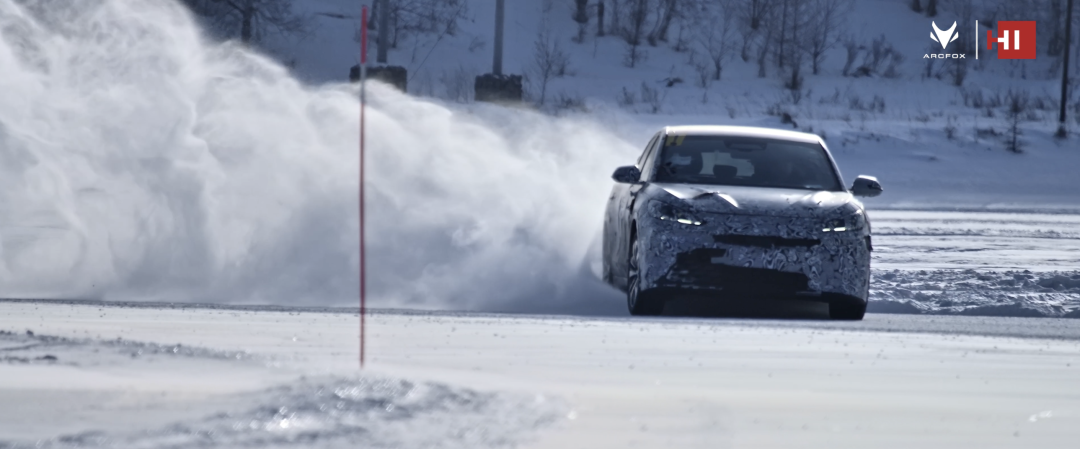
Since 2017, the two sides have invested more than three thousand R&D personnel to work together in completing multiple rounds of rigorous testing and validation to create this car.
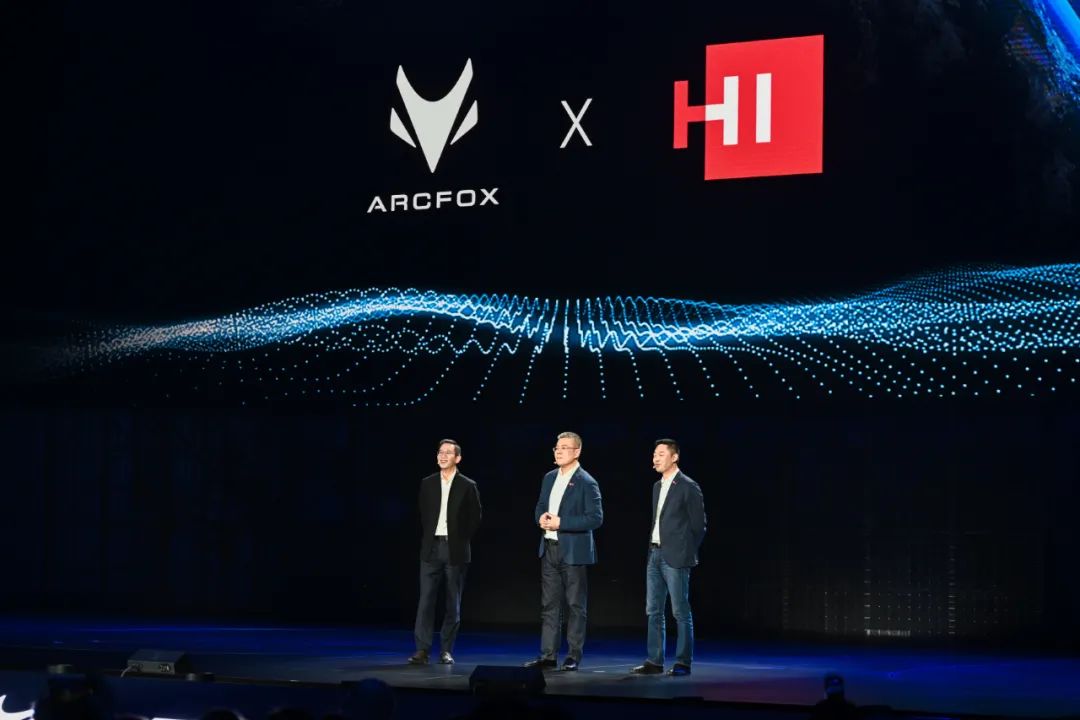
As Wang Jun of Huawei said, this car is a child jointly developed by the two companies. After years of development, this car has finally made a splash.
It’s more than a car
Under the spotlight of this press conference, some people saw a new car, some people saw Huawei’s strong technology, and I saw something different.On a macro level, I see the rapid progress of China’s smart electric vehicle industry. Even companies like ARCFOX, which may not have ideal online reputation and market performance, can produce core products that can stand at the top of the industry under pressure. Meanwhile, Huawei, focusing on ICT, has opened the door to the next era with its full-stack, self-developed smart car solution.
In the age of smart electric vehicles led by Tesla, the ARCFOX Alpha S Huawei HI version is likely to become the world’s first** mass-produced** autonomous driving vehicle delivered globally before the FSD Beta is officially released. This car gathers the wisdom of elites from all walks of China’s smart electric vehicle industry.
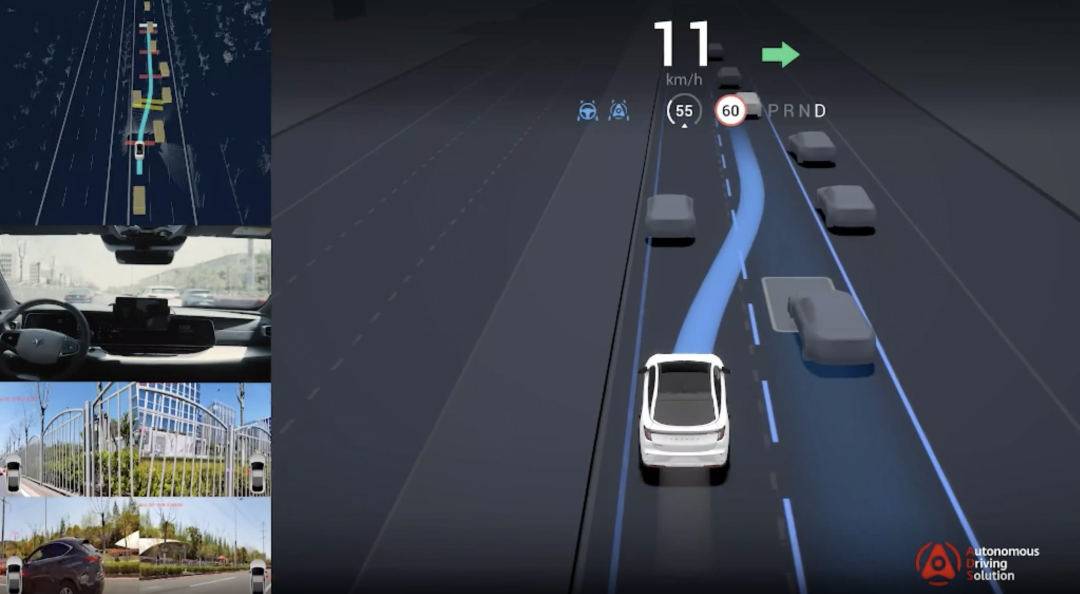
On a human level, let’s go back to 2013, when Huawei first laid out its smart car autonomous driving business, I was still taking the college entrance examination, and Beiqi had been developing new energy for four years. It seems that we were all on different roads at that time.
After Beiqi’s seven-year itch in the new energy industry, it once hesitated to persevere on this track. I went through three years of confusion after graduation, and Huawei struggled to establish its high-end brand in the midst of difficulties, but also faced the malicious suppression of the world’s strongest forces.
But in the midst of the dilemma, we are all moving forward, trying to make ourselves better, and by chance, we came together because of this car.
When I saw our video appear in the release event Easter eggs, I was moved to tears, because, as someone who has worked in manufacturing, I know how much effort is required behind such automatic driving capabilities.
I still remember last year during the pandemic when I entered Huawei as a supplier. In the case of personnel shortage, to ensure production, half of the remaining workforce had to bear the original workload, working overtime in a dust-free workshop under extreme physical and mental pressure.
During the epidemic period, colleagues at Huawei’s dust-free workshop worked overtime until midnight. I still remember my university classmates in the Huawei Smart Cockpit who helped me with their expertise beyond their busy work and contributed to my most excellent deep article. Also, my colleagues quickly edited the video after experiencing the actual car.
Although in different industries, at that moment, we believed that there was a resonance in that emotion.
Final Thoughts
The collaboration between Arctic Fox and Huawei to create this car has significant meaning, some of which go beyond the product itself. After the strong feeling of ethnic pride gradually subsides, I think there are still some regrets in the product: the design of the Arctic Fox Alpha S Huawei HI version is still somewhat plain. As mentioned earlier, the high positioning and high configuration make the price of this car relatively high. Although it is a vehicle that is worth waiting for, the prejudices and brand concept that car sales face may be more challenging to deal with than technical research and development.
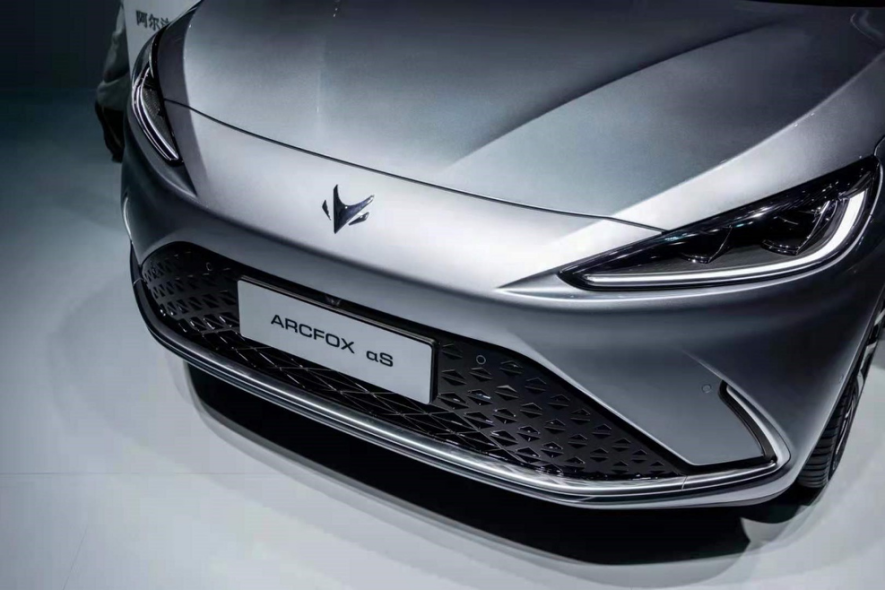 “`
“`
But even so, as someone who has transitioned from the manufacturing industry to the media industry, I express my greatest respect and support for the Jidu Alpha S Huawei HI Edition. Perhaps it is not a very charming product, but in my eyes it is a spiritual totem with special significance. On this car, I can see Jidu, Huawei, my fellow classmates at Huawei, myself as a supplier who used to enter Huawei, and myself as a media person now. And through these memories and spirits, I can catch a glimpse of the imaginative future of China’s smart electric vehicles.
At the end of the article, I also want to send this passage to Huawei, Jidu, and all the people and manufacturers who silently made efforts for China’s smart electric vehicles:

The NBA Spurs’ championship ring has a stone-carving pattern on its side, and there is such a saying hanging in their locker room:
“When everything seems to be in vain, I go watch a stonemason chiseling stones. He chiseled a hundred times in a row, but the stone remained intact. However, on the one hundred and first strike, the stone split in half. But I know that it’s not the last blow that made the stone split, but the result of the previous one hundred strikes.”
“`
This article is a translation by ChatGPT of a Chinese report from 42HOW. If you have any questions about it, please email bd@42how.com.
